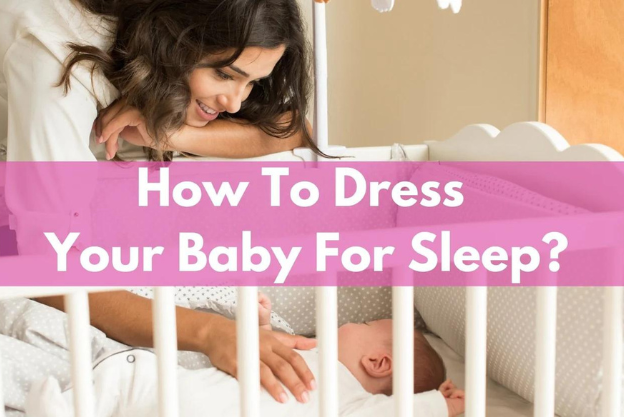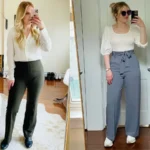Your Baby’s Comfort, safety, and overall well-being, make sure they are dressed suitably for sleep. It’s extremely important to dress babies for the season and the climate of the room because they can’t control their body temperature as well as parents can. This thorough guide is going to help you as you get your baby dressed for a safe and Enjoyable Night’s Sleep Baby
5 Best Tips For Comfort & Safety
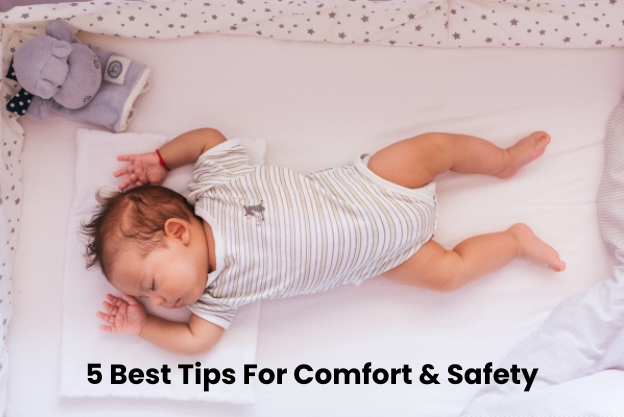
5 Best Tips for Ensuring Comfort and Safety While Dressing Your Baby for Sleep – Discover Essential Advice for a Restful Night and Safe Sleep Practices
1. Check the Room Temperature
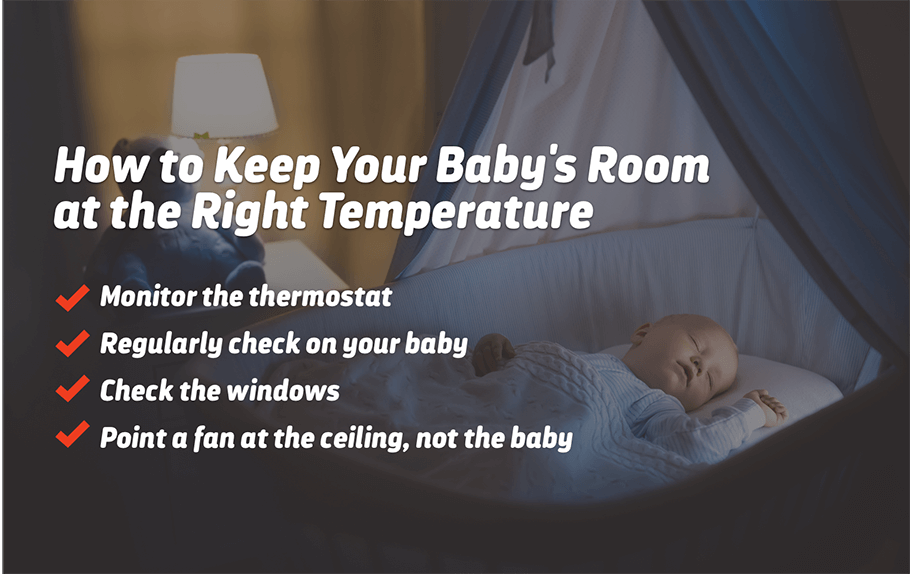
Ideal Range: The ideal room temperature for a baby’s sleep is between 68-72°F (20-22°C). This range is comfortable for most babies and helps them sleep soundly
Use a Thermometer: Keep a room thermometer in your baby’s nursery to monitor the temperature. Adjust your baby’s clothing based on whether the room is warmer or cooler.
2. Choose the Right Sleepwear
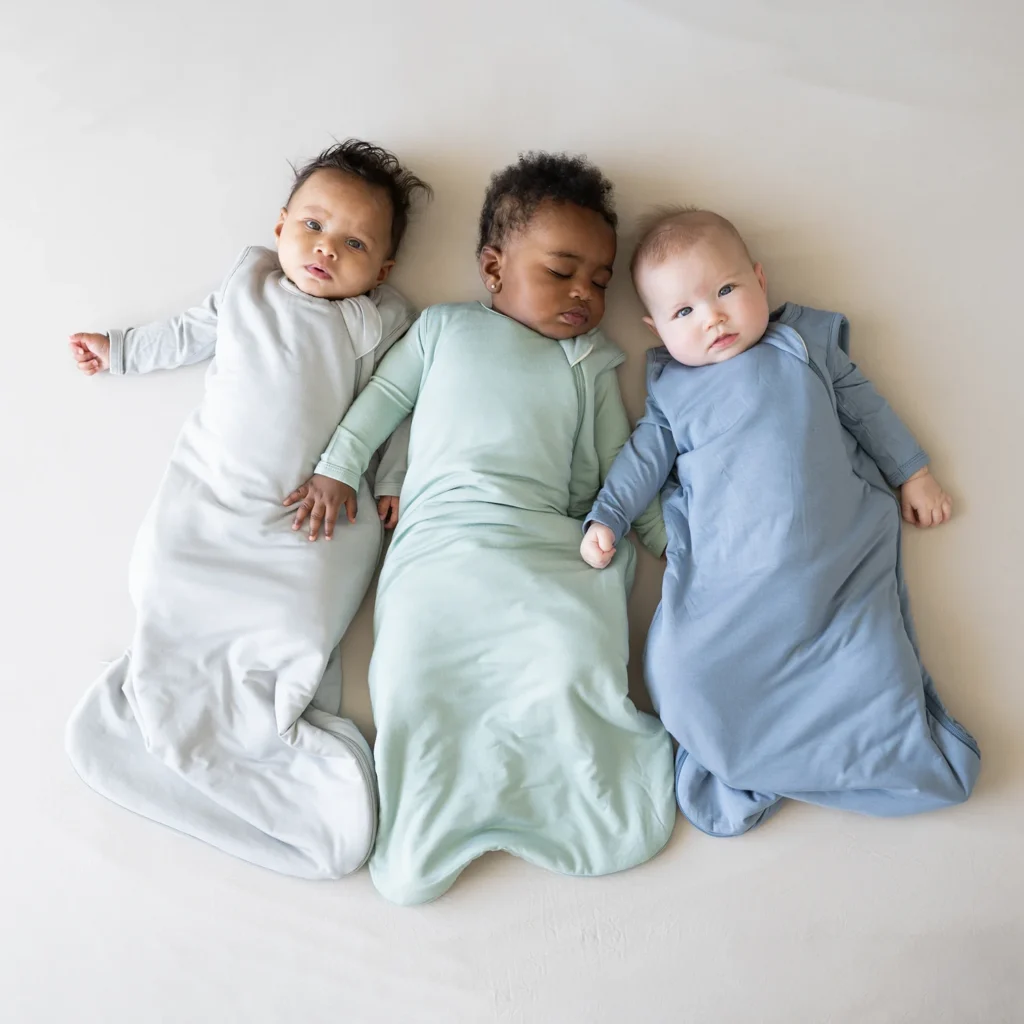
Lightweight Cotton: In warmer conditions, dress your baby in a lightweight cotton onesie or a short-sleeved bodysuit. Cotton is breathable and helps keep your baby cool
Footed Pajamas: In cooler conditions, opt for footed pajamas made of fleece or a thicker cotton blend. These provide warmth without the need for additional blankets
Sleep Sacks: A sleep sack is a wearable blanket that keeps your baby warm and secure. Choose one appropriate for the season—a lighter material for warmer months and a thicker, quilted one for winter.
3. Layer Wisely
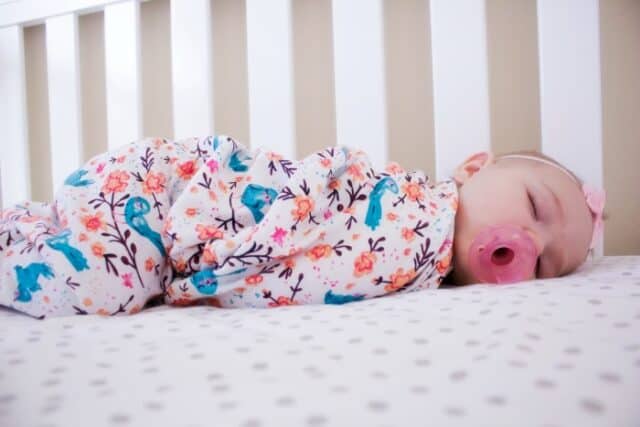
Start with a Onesie: Begin with a soft, breathable onesie as a base layer. You can then add additional layers, such as pajamas or a sleep sack, depending on the room temperature.
Avoid Over-Layering: While layering can keep your baby warm, too many layers can lead to overheating. Check your baby’s neck or back to ensure they are comfortable and not too warm.
3. Consider Swaddling for Newborns
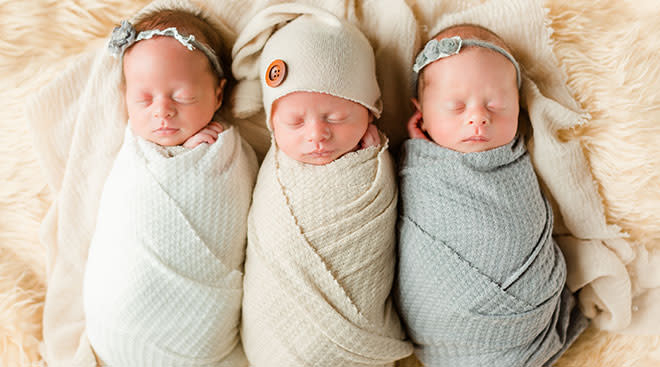
Swaddling Benefits: Swaddling can help newborns feel secure and sleep better. Use a lightweight swaddle blanket or a specially designed swaddle sleep sack
Safe Swaddling: Ensure the swaddle is snug around the arms but loose around the hips to allow for natural movement. Stop swaddling once your baby starts to show signs of rolling over.
4. Adjust for Seasonal Changes
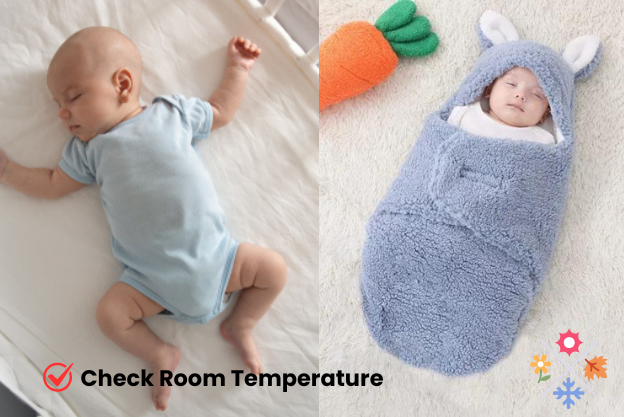
Summer: In hot weather, dress your baby in a lightweight cotton onesie or diaper with a light sleep sack. Ensure the room is well-ventilated
Winter: In cold weather, use a long-sleeve onesie, footed pajamas, and a warm sleep sack. Keep the room at a comfortable temperature, but avoid overheating
5. Nighttime Checks
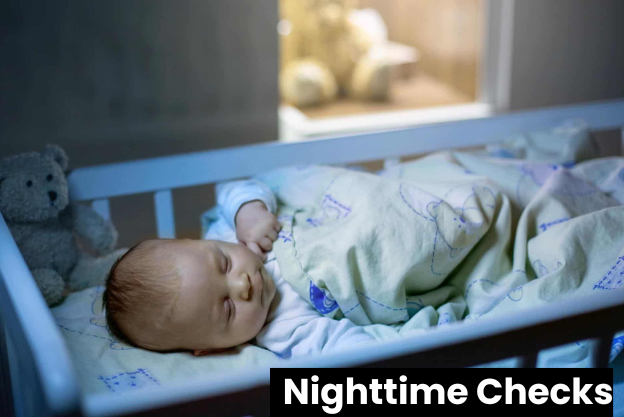
Check Baby’s Comfort: During the night, periodically check your baby’s comfort by feeling their neck or back. If they feel too warm or too cold, adjust their clothing accordingly
Safe Sleep Environment: Always place your baby on their back to sleep, and keep the crib free of pillows, blankets, and stuffed animals to create a safe sleep environment.

